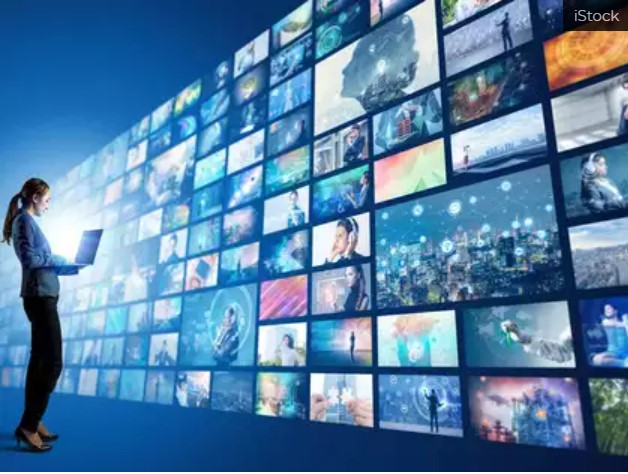The key hypocrisy in this story is that India’s private radio stations want to broadcast current affairs, but are prohibited from doing so. They are not allowed to generate any current affairs content, and can only repeat AIR news broadcasts, which represent an attempt to extend the government’s monopoly rather than inform citizens.
While paying lip service to media freedom, the government itches to intervene in the media. The latest example is its new rules forcing TV channels to carry half an hour of content daily on eight topics ranging from education and agriculture to national integration. This is not an earthshaking attack on the media. But it is unwarranted interference in the freedom to broadcast and freedom to listen.
Autocracies force the media to carry content, but not respectable democracies. India is ranked 150th of 180 countries in media freedom by Reporters Without Borders. India needs to improve media freedom, not burden it with more rules.
The New Influencers
All new rules give politicians and bureaucrats power over producers and recipients of content. They oblige businesses to kowtow to officials to avoid harassment. They facilitate the extraction of bribes and favours. Prime Minister Narendra Modi says he wants to promote the ease of doing business. The new rules make business more difficult, not easier.
TV should be used to educate the public on the eight topics. But, for that, the government already has powerful vehicles in All India Radio (AIR) and Doordarshan. In addition, private journals, TV and internet outlets provide a plethora of information on all eight topics. If there is no shortage of information, why have more rules?
The key hypocrisy in this story is that India’s private radio stations want to broadcast current affairs, but are prohibited from doing so. They are not allowed to generate any current affairs content, and can only repeat AIR news broadcasts, which represent an attempt to extend the government’s monopoly rather than inform citizens. If it is in the public interest to force private TV channels to cover these eight topics, how can the government prohibit private radio from doing the same?
Officials say the airwaves belong to the government and must serve the public interest. Actually, the Supreme Court says the airwaves belong to the people, not the government. That apart, broadcasting of all sorts is subject to enormous regulation already. Sadly, since Independence, broadcasting rules have sought to promote the interests of the ruling party rather than the public.
The Constitution guarantees free speech and free media. Yet, in a country with only 18% literacy at Independence, the Congress decreed a radio monopoly for the government, capturing the bulk of the Indian audience. It claimed radio must be used to promote the public interest. But this could have been achieved with a public channel while allowing private channels to broadcast freely too. The government preferred a monopoly.
Long-wave radio can be transmitted and heard across the world, without government permission. The government in the 1950s prohibited commercial music and programmes on AIR to oblige the public to listen to government-decreed programmes. Instead, music listeners switched to Radio Ceylon, which became the most popular channel by far. For objective news, many turned to BBC, not AIR. Did this foreign abrogation of government control over airwaves harm India? No, it empowered Indian citizens through freedom of choice.
When TV arrived, the government created a new monopoly, Doordarshan. This too was used to promote ruling party interests. But just as technology killed the radio monopoly, it killed the TV monopoly too. Entrepreneurs set up dishes to receive CNN and other global channels and transmitted this to consumers through cables strung across buildings. This was illegal, but when millions started breaking the law, the government accepted defeat and regularised it.
Tech Killed the TV Star
It licensed private channels and allowed uplinking within India. Many critics warned that a few large business houses would dominate private TV. But, in fact, hundreds of new TV channels blossomed. New ones keep coming up, a real democratisation of broadcasting. That further expanded with the spread of the internet.
The government still keeps a monopoly on terrestrial TV broadcasting. This unwarranted restriction gives it a captive audience in non-cable TV in vast rural areas. That monopoly should be abolished if the government really wants public education.
The new guidelines say, ‘The channels may appropriately modulate their content to fulfil the obligation except where it may not be feasible, such as in the case of sports channels, etc.’ Actually, it is technically feasible to oblige even sports and wildlife channels to broadcast on the eight topics, but would be folly to do so. Equally, it is folly to ask any other channel to do so.
Major TV channels already cover the eight topics extensively. If many specialist channels are exempted from the new rules, what will be the market share of the channels newly covering the eight topics? Very modest. So, why bother? What is achieved other than giving more power to politicians and bureaucrats?
Increasingly, people now get their news and views from the internet and social media. That strengthens the case for dropping the new guidelines. In democracies, regulations must be limited to checking abuses (such as promoting hate). They should not force channels to carry government-directed content.
This article was originally published by The Economic Times on Nov 15,2022


